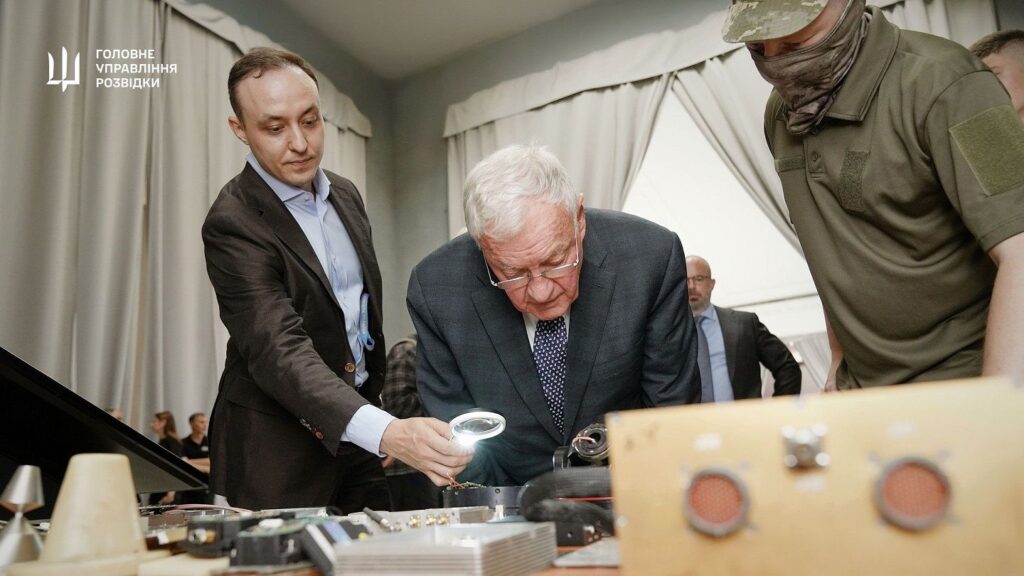US envoy sees how Russia bypasses sanctions and uses Western components in weapons that kill Ukrainians

Keith Kellogg got an uncomfortable look at how Western sanctions on Russia are failing. During his visit to Kyiv, the US Special Representative to Ukraine examined Western-made electronics that Ukrainian intelligence pulled from destroyed Russian weapons—the same components fueling attacks on Ukrainian cities.
The exhibition was coordinated by the War&Sanctions portal of the Main Intelligence Directorate, working alongside the Defense Forces of Ukraine and the Kyiv Research Institute of Forensic Expertise. The display featured components extracted from destroyed or captured Russian weaponry by Ukrainian military intelligence personnel.
Among the items presented to Kellogg were Western elements found in Iranian-Russian Shahed kamikaze drones, also known as “geranium” drones, and Russian “gerbera” drones. These weapons systems have been consistently deployed against civilian targets in Ukraine.
But the problem runs deeper than drone components. Ukrainian analysts identified precision microelectronics critical for manufacturing high-accuracy weapons systems. Russia’s defense industry acquired these through what intelligence officials call “gray schemes”—unofficial networks designed to bypass sanctions.
“The international community must strengthen control over compliance with sanctions imposed on Moscow,” said Cipher, a Main Intelligence Directorate serviceman. “Manufacturers should take a more responsible approach to controlling their products in international markets.”
Head of Ukraine’s Defense Intelligence Kyrylo Budanov also warned Kellogg during their meeting in Kyiv that Russia’s war ambitions extend far beyond Ukraine and are projected to last until 2036, including preparations for a major conflict not only against Ukraine but also NATO.
Earlier, President Zelenskyy highlighted a significant loophole in international sanctions that allows Russia to continue producing its nuclear-capable Oreshnik intercontinental ballistic missiles using Western technology.
In 2024, Russia increasingly relied on North Korean KN-23 ballistic missiles to strike Ukraine, while analysis of missile fragments revealed that these weapons contain significant Western-made electronic components, primarily produced by companies from the US, the Netherlands, the UK, and Switzerland, some manufactured as recently as 2023.
These foreign parts include crucial guidance system circuitry without which the missiles could not function, highlighting that the missiles are reliant on imported Western technology despite sanctions.
Experts believe China acts as an intermediary in supplying these components to North Korea, raising concerns about loopholes in export controls and the illicit trade fueling Russian missile capabilities.